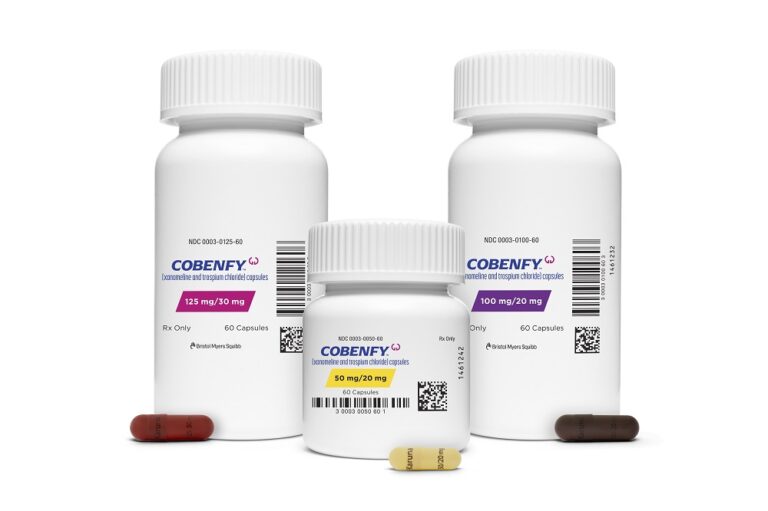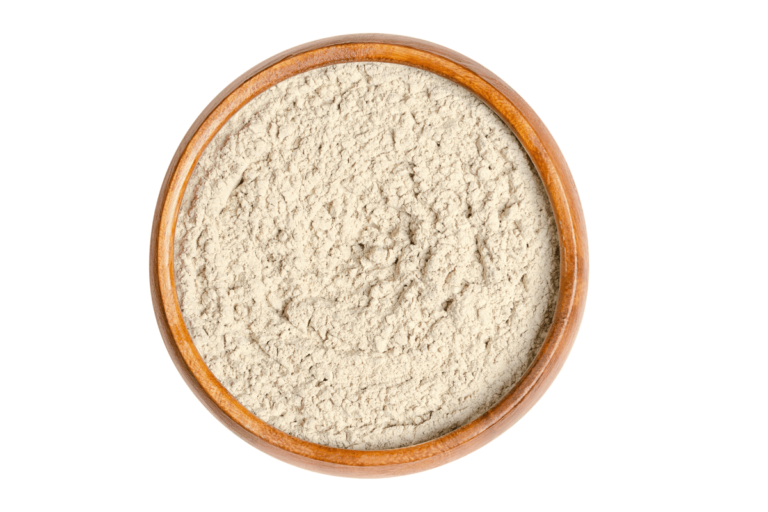Bland, dry salmon no more! My parents made salmon all the time growing up and they taught me one secret – to wrap it in foil before baking. This traps the heat and moisture and cooks your salmon quickly, infusing it with whatever it’s flavored with.
I love buying a large filet of salmon to do this, but using single-serve portions also works. Whatever you do, make sure to follow the marinade for this recipe 😏
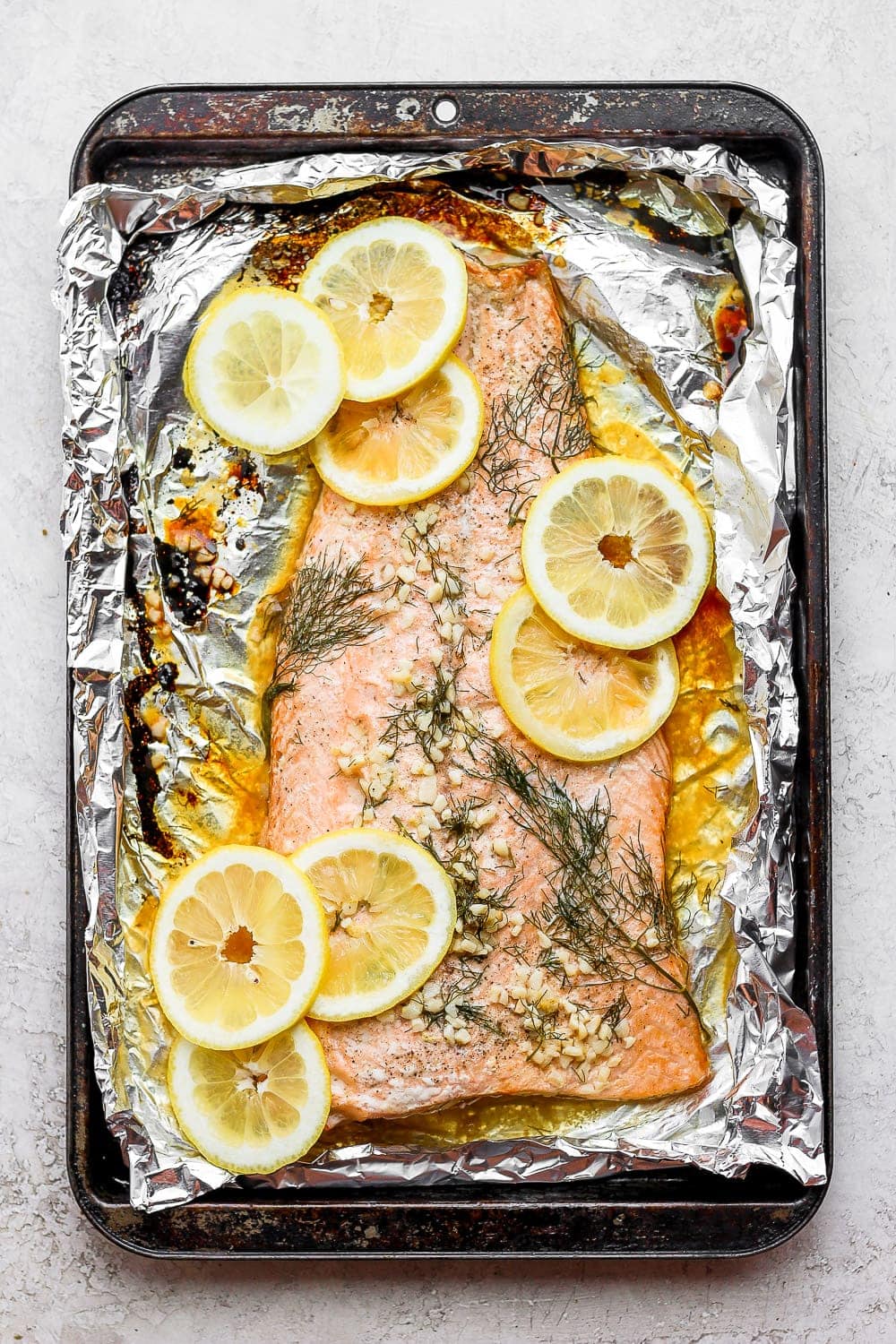
Recipe Highlights
This recipe provides a consistent and delicious result every time I make it. It is easy to whip together in minutes, and is tender and flaky because the salmon is perfectly marinated and cooked to perfection in foil.
“One of my husband’s favorite Salmon recipes! We made this for the main entree for our untraditional Thanksgiving dinner, and it was a hit! The tartar sauce recipe takes this salmon to the next level!”
-Kendra N.
You can buy salmon in all different shapes, sizes, and species. I recommend buying salmon that has a higher fat content. The higher the fat content, the moister the salmon. King, Atlantic, and Sockeye Salmon are the fattiest salmon filets.
This particular recipe calls for a 2.5 – 3 lb. uncooked salmon fillet. You can use a salmon fillet that has either the skin on or off, but I prefer skin-on because it adds a really nice layer of fat and flavor.
If you can’t find a large salmon fillet, you can always use “salmon portions,” which just refers to cut-up pieces of a large salmon fillet. I suggest placing them right next to each other to mimic a larger salmon filet so that you can use the same bake time we recommend.
If you can only find a salmon fillet that’s less than 2.5 lbs., simply decrease the bake-time. Start with 20 minutes and go from there.
My all-time favorite salmon is Surrender Salmon. They catch wild-Alaskan salmon off of Bristol Bay in Alaska. The salmon is bright orange, so flakey and delicious, and truly the best.
Surrender Salmon is a family-run company based here in Minneapolis and they are good friends of ours! Support a local business if you can.
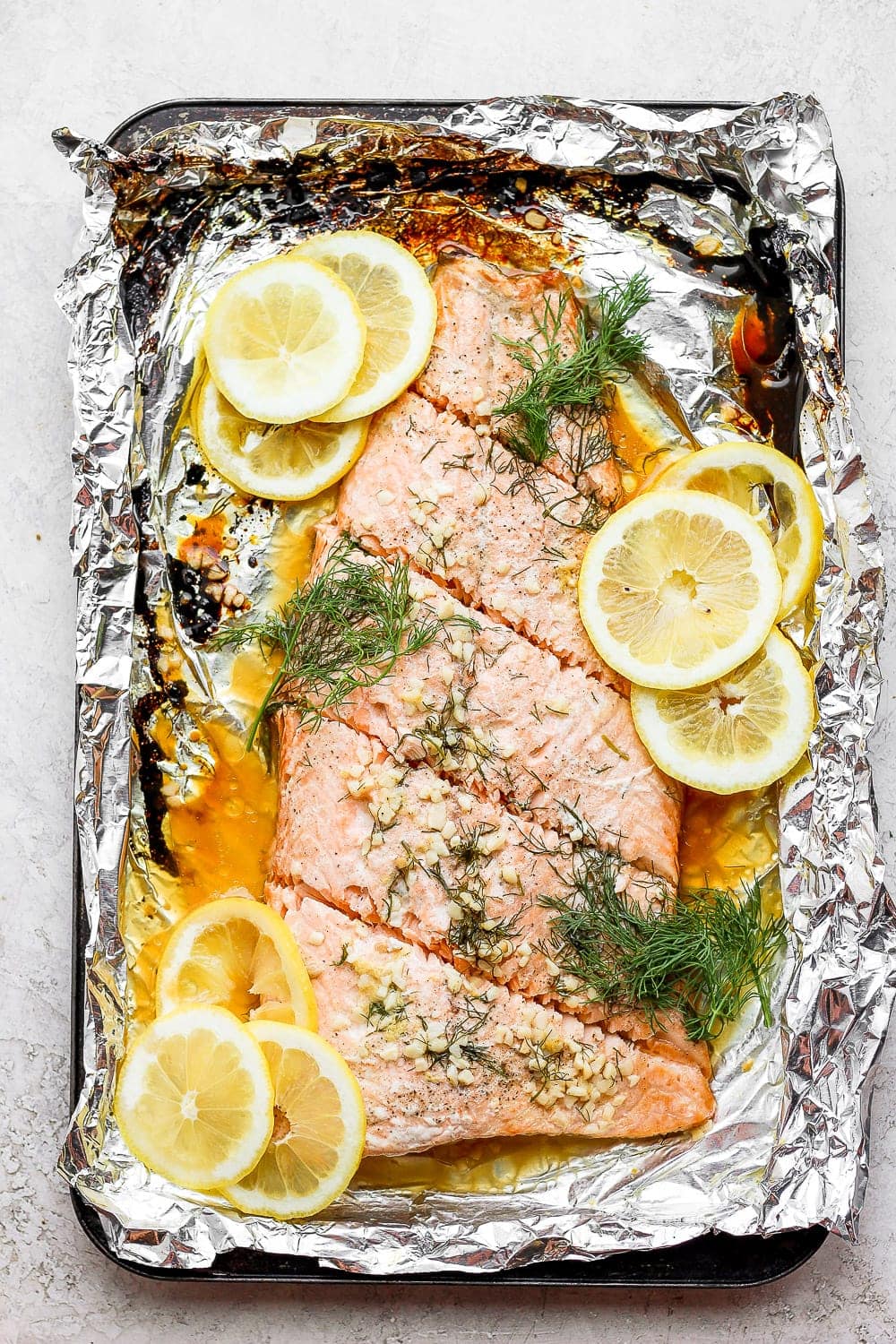
How to Bake Salmon in Foil
Every baked salmon fillet should start with a delicious salmon marinade that infuses flavor into the entire part of the fish. That’s why the first step in how to bake salmon is marinating your salmon filet for 15-30 minutes.
Make sure not to marinade things for too long or the acid from the lemons can actually start to cook the fish.
2. Create a Foil Pack
Baking salmon in foil creates a vacuum seal vessel that keeps moisture inside of the foil boat to create a moist salmon filet that bakes quickly.
3. Bake
I bake salmon in foil at 375ºF. I used a 2.5 lb. salmon fillet that was around 2 inches thick. The bigger and thicker the salmon fillet, the longer it will need to cook.
Once salmon is fully cooked, it will change from a translucent bright pink/orange color to a light pink color that’s more opaque. It will also be firm to touch and easy to flake.
4. Broil
Once the salmon is almost done, remove it from the oven. Open up the tin foil boat and then add 2 tablespoons of cold butter to the top. Finish the salmon off by broiling it.
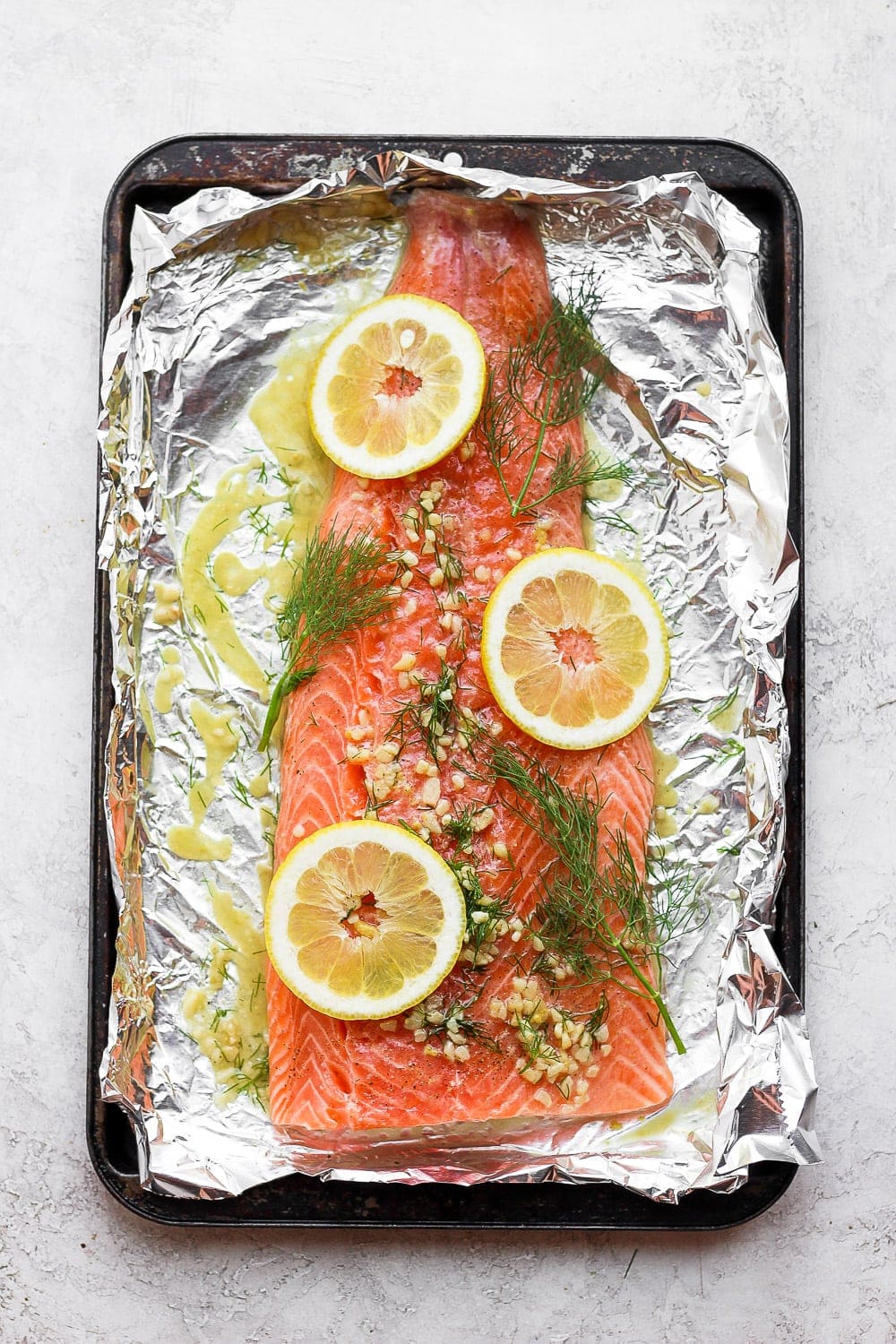
Doneness and Cooking Times
If you want to get really technical, the FDA requires salmon to have at least a 145ºF internal temperature to be safe to eat. So, feel free to test it with a meat thermometer.
I like when my salmon is fork-tender and flaky. That typically happens around 145ºF.
Cooking times for salmon will vary by the thickness of the filet. A general rule of thumb to go by is to cook the salmon for about 4-5 minutes per 1/2 inch of the salmon.
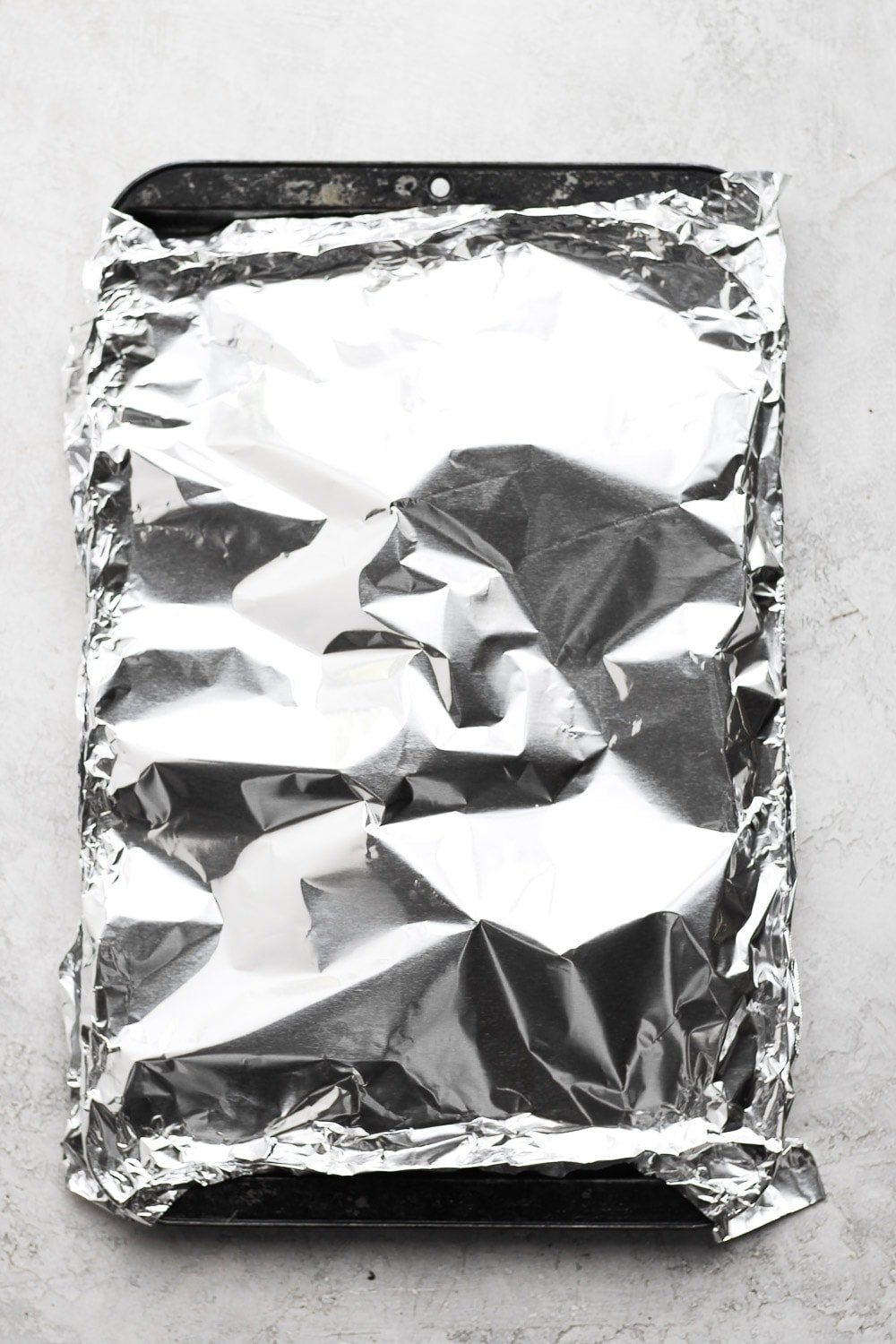
Flavor Variations and Substitutions
Want to get sassy with your salmon marinade? Be my guest! You can use so many different ingredients for marinades, such as sauces and salad dressings. Keep things easy, that’s the way I like to do it these days. Try a stir-fry sauce, firecracker sauce, or an Italian salad dressing.
Don’t be nervous to change things up if you are out of an ingredient for this recipe. If you don’t have lemon, substitute with limes or oranges. If you don’t have fresh dill, feel free to use dried dill. There are 2 tablespoons of fresh dill. I suggest substituting with 2 teaspoons of dried dill.
Health Benefits of Salmon
Salmon is high in protein and omega-3s. It is naturally gluten-free, dairy-free, and low-carb. It is a great dish for a well-balanced diet.
Serving and Pairing Ideas
How to Reheat Baked Salmon
The easiest way to reheat baked salmon is in the microwave. Place your salmon on a microwave-safe plate and microwave on high for 60-90 seconds.
You can also reheat this salmon in the stove-top or in the oven.
PS: make sure to discard the tin foil and whatever you do, DO NOT put it in the microwave!
What seasonings work well for baked salmon?
I think garlic, lemon, and dill are perfect ingredient pairings for salmon. Other great seasoning options are pre-mixed spice mixes like lemon pepper, all-purpose seasoning, or any other seafood seasoning.
Can I use olive oil spray to coat the salmon?
Yes, you can use olive oil to coat the salmon.
Is it better to bake salmon in the oven or cook it on the stove (especially for beginners)?
It is better to bake salmon in the oven for a beginner.
Got leftover salmon? Lucky you! Leftover salmon makes for the ultimate meal-prep protein!
Store salmon in an airtight container in the refrigerator for up to 3 days. I like using glass meal-prep containers for this as you can reheat it right in there.
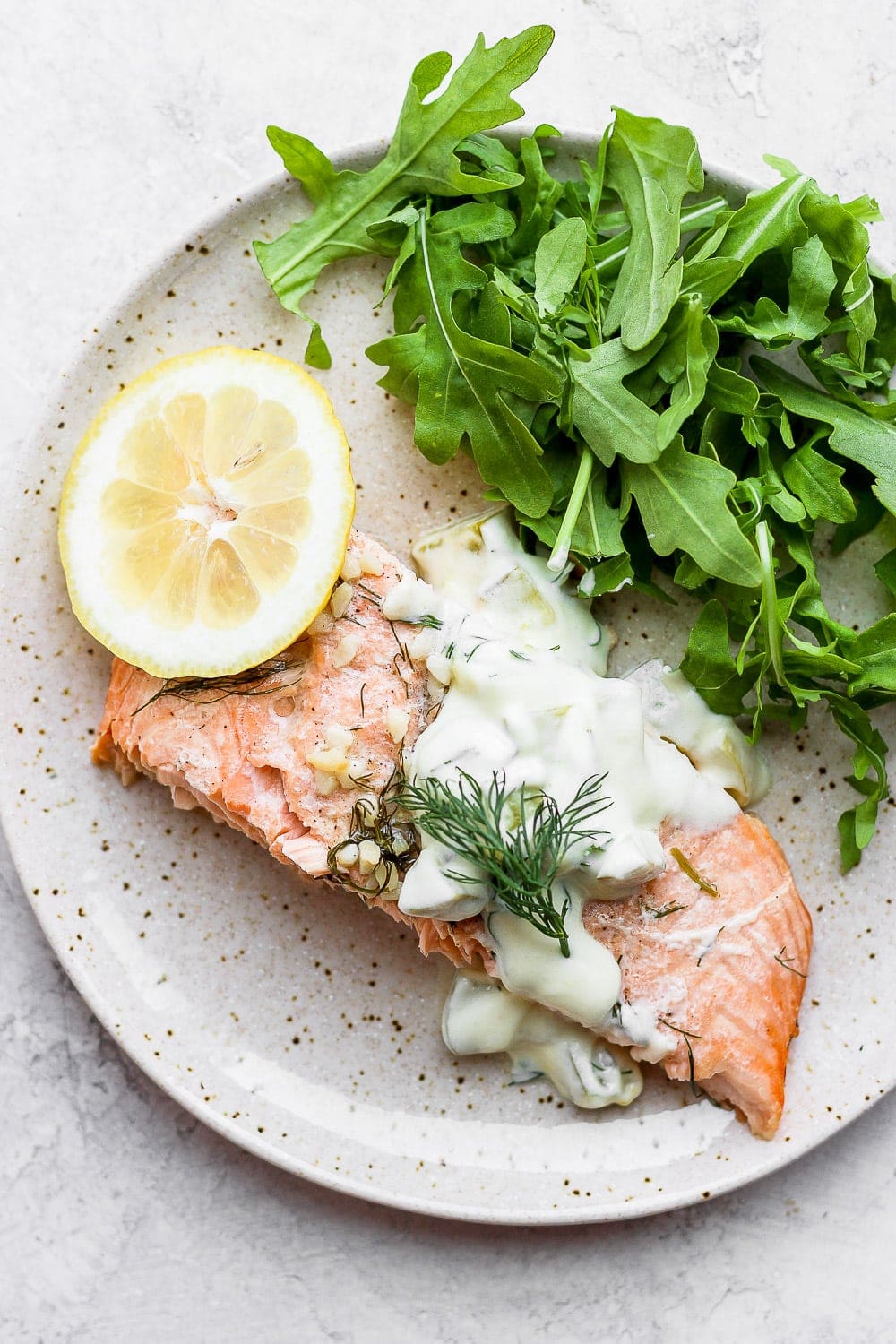
More Salmon Recipes
Salmon Marinade
Tartar Sauce
-
Begin by removing any excess moisture from the salmon fillet with a paper towel and sprinkle the salmon fillet with salt and pepper. Set aside.
-
Next, prepare the marinade by placing olive oil, lemon juice, dijon mustard, honey, dill, salt, and garlic into a bowl and whisking until all the ingredients are combined.
-
Place a large piece of tin foil onto a baking sheet or into a 9×13-inch pan and make sure the edges of the tin foil are folded up so no liquid can escape. Pour the marinade onto the bottom of the tin foil.
-
Place the salmon fillet skin side up into the marinade and let it sit for 15-30 minutes. You don’t want to marinate your salmon too long, so make sure not to leave it overnight.
-
While the salmon is marinating, preheat the oven to 375ºF.
-
Next, flip the salmon fillet over to skin side down and lay lemon slices and fresh dill sprigs on top of the salmon.
-
Carefully, wrap the salmon in the tin foil by folding all the edges in so no air can escape (you may need to add another piece of tin foil to keep the air in).
-
Place salmon in the oven and bake for 25-35 minutes. The cook time varies by how thick the salmon fillet is. This salmon fillet was about 2-inches thick and needed 35 minutes to bake.
-
While the salmon is baking prepare the tartar sauce by adding all the ingredients into a bowl. Mix the ingredients together and place the tartar sauce in the refrigerator.
-
When the salmon bake time is up, check to see if the salmon is fully cooked. The salmon will be done when it turns a pale pink and is easily flaked with a fork.
-
Remove the salmon from the oven and remove the dill and lemon slices from the tin foil. Turn oven to broil.
-
Carefully lay 2 tablespoons of cold butter over the top of the salmon and place the salmon in the oven (uncovered) for an additional 2-5 minutes (depending on the strength of the broil). The goal of the broil is to melt the butter and end up with a caramelized top on the salmon.
-
Remove from the oven and let rest for 5 minutes. Then, serve the salmon with tartar sauce.
- Nutrition information only includes the salmon and the marinade and is for 2 lbs. salmon.
- Storage: store salmon in an airtight container in the refrigerator for up to 3 days.
- Grilled Salmon in Foil: Follow the steps to marinate and wrap your salmon in foil. Then, grill your salmon in foil at medium/high heat (around 375ºF – 400ºF) over direct heat for 15 minutes. Move it to indirect heat and continue grilling for around 10-15 more minutes or until the internal temperature reaches 145ºF.
Calories: 269 kcal, Carbohydrates: 2 g, Protein: 30 g, Fat: 15 g, Fiber: 0 g, Sugar: 2 g
Nutrition information is automatically calculated, so should only be used as an approximation.
Photography by: The Wooden Skillet


